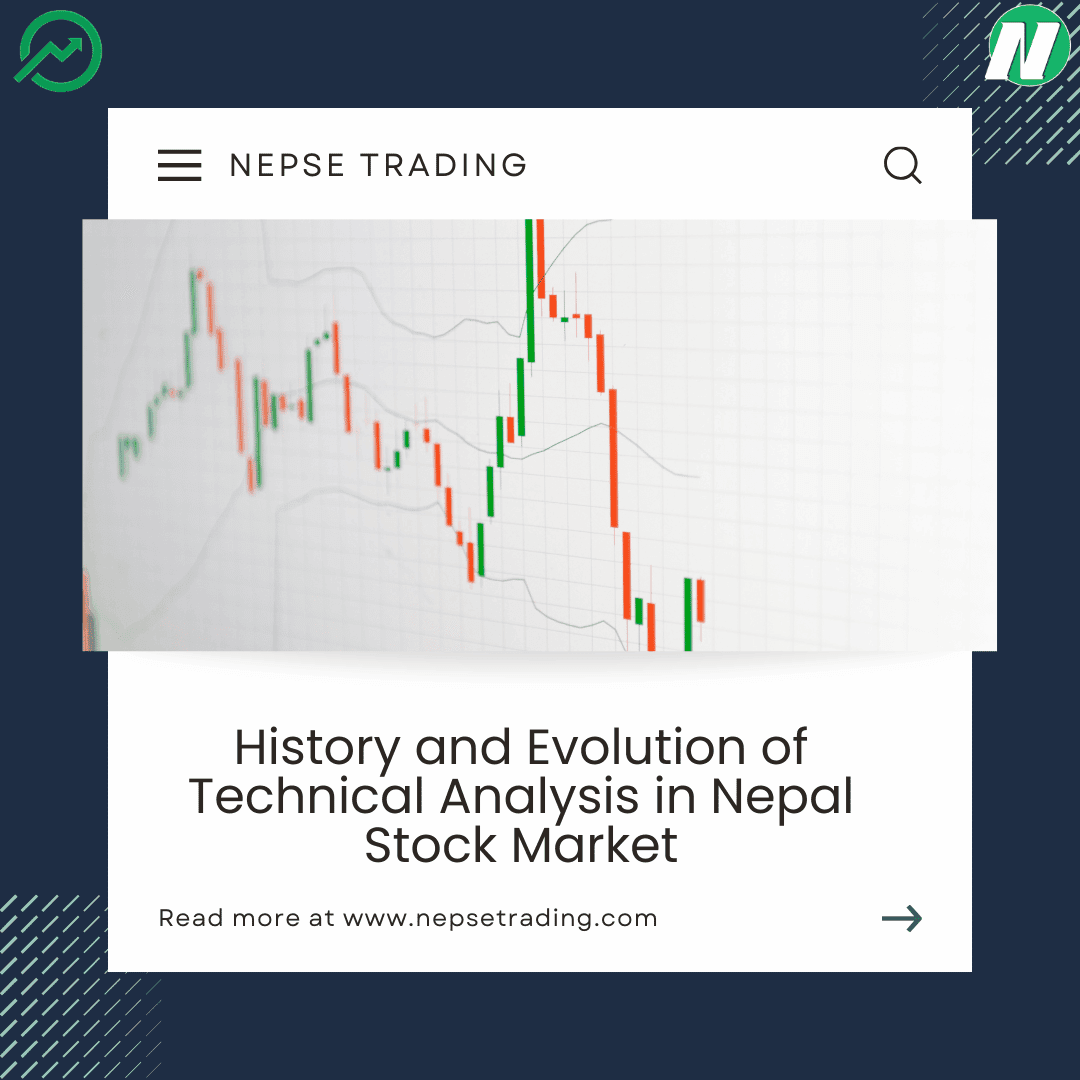By Sandeep Chaudhary
History and Evolution of Technical Analysis in Nepal Stock Market

The story of Technical Analysis in Nepal reflects the gradual transformation of the Nepal Stock Exchange (NEPSE)from a manually driven marketplace to a data-based, analytical trading environment. In the early years of NEPSE — particularly during the 1990s and early 2000s — trading was largely fundamental- and rumor-driven. Most investors focused on dividend announcements, political news, or insider information. Chart reading, indicators, and market psychology were virtually unknown to the general public.
The true journey of Technical Analysis in Nepal began around the mid-2010s, when online trading platforms, digital price feeds, and charting tools (like MetaTrader, TradingView, and NEPSE official portals) became accessible. The global rise of retail trading and YouTube-based education inspired a new generation of Nepali traders to explore chart-based strategies. Initially, Technical Analysis was limited to simple trendlines, moving averages, and candlestick formations, but as more traders gained exposure to international trading concepts, advanced theories like Elliott Waves, Fibonacci Retracement, Smart Money Concepts (SMC), and ICT (Inner Circle Trader) frameworks gradually entered the scene.
A major turning point came when professional trainers and analysts started formalizing this knowledge for Nepali learners. Among them, Sandeep Kumar Chaudhary — Nepal’s leading Technical Analyst and founder of NepseTrading Elite — played a pioneering role. With over 15 years of banking and stock market experience, and specialized Technical Analysis training from Singapore and India, he introduced structured trading education in Nepal. His programs bridged the gap between global market systems and the NEPSE environment, teaching thousands of students how to interpret charts, analyze trends, and trade with discipline.
Under his mentorship, Technical Analysis in Nepal evolved from theory to practice — with thousands of traders now using real-time data, candlestick psychology, RSI, MACD, and SMC-based institutional models to make informed decisions. The culture of “guess trading” has shifted toward strategy, logic, and analysis. Today, Technical Analysis has become a mainstream skill — not just for traders, but also for portfolio managers, research analysts, and investment advisors across Nepal.









